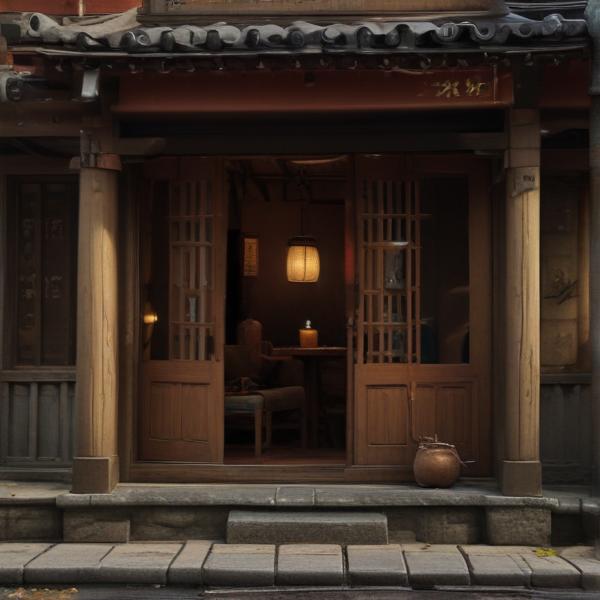基本信息 (Basic Information)
含义与用法 (Meanings & Usage)
中文核心释义 (Core Chinese Meaning): 家畜,特指用于祭祀的家养动物。
英文核心释义 (Core English Meaning): domestic animal, especially one offered as a sacrifice
象形意义 / 为何这么写 (Pictographic Meaning / Writing Rationale)
文言文释义 (Classical Chinese Meaning)
与现代意义相近,主要指用于祭祀的家畜。Similar to modern meaning—the main reference is to domestic animals used for sacrifice.
深入学习 (In-depth Study)
字源故事 (Origin Story)
字形演变 (Character Evolution)
常用词语和例句 (Common Words & Examples)
牲口 (livestock or draught animals (such as oxen, horses, mules, donkeys))
他家里养了不少牲口。
Eng: He raises quite a few livestock at home.
牲畜 (domestic animals, livestock)
牧场上的牲畜十分健康。
Eng: The livestock on the ranch are very healthy.
相关成语 (Related Idioms)
相关成语信息待补充。Related idiom information pending.
多语言翻译 (核心释义) (Translations (Core Meaning))
- French: bétail; animal sacrificiel
- German: Opfertier; Haustier
- Spanish: animal doméstico; animal para sacrificio
- Italian: bestia da sacrificio; animale domestico
- Portuguese: animal doméstico; animal de sacrifício
- Russian: жертвенное животное; домашний скот
- Arabic: حيوان أليف؛ حيوان يُستخدم كأضحية
- Persian: دام اهلی؛ حیوان قربانی
- Dutch: huisdier; offerdier
- Polish: zwierzę domowe; zwierzę ofiarne
- Vietnamese: vật nuôi; động vật hiến tế
- Ukrainian: жертовна тварина; домашня худоба
视频学习资源 (Video Learning Resources)
通过以下链接在热门视频网站搜索 "牲" 的更多讲解:
Search for more explanations of "牲" on popular video sites:
- 在 Bilibili.com 搜索 "牲 字源 说文解字" (Search on Bilibili)
- 在 YouTube.com 搜索 "牲 character origin etymology" (Search on YouTube)
网络参考 (Web References for "牲") ()
网络内容摘要 (Web Content Summary):
核心含义与象形起源: “牲”是一个形声字,左边“牛”表意,右边“生”表音。甲骨文中的“牲”由“羊”或“牛”与“生”组合,表示“鲜活的牲畜”,最初指用于祭祀的全牛或全羊等家畜。 Core meaning & pictographic origin: "牲" is a phono-semantic compound character: the left part "牛" (cow/cattle) indicates meaning, while the right part "生" gives the sound. In oracle bone script, “牲” combined elements for “ox/sheep” and “alive”, originally meaning "live sacrificial animal."
文化背景: 在古代中国,牲畜(如牛、羊)常被用作祭祀天地和祖先的祭品。因此,“牲”常常特指那些为祭祀而饲养、挑选的健康完整的动物。 Cultural background: In ancient China, livestock such as cattle and sheep were frequently sacrificed in rituals to honor heaven, earth, and ancestors. Thus, “牲” refers specifically to whole, healthy animals chosen for these purposes.
特别用法与常用词: 后来,“牲”引申为泛指家畜(如牛、羊、猪等),常见于词语“牲畜”。 Usage & common words: Later, “牲” broadly referred to all livestock (such as cattle, sheep, pigs), commonly used in the word “牲畜” (livestock).
- 易混淆点: “牲”主要写作“牲畜”,不应与表示“生”的活物或“生”的生命等混淆。 Common confusion: "牲" is mostly used in "牲畜" (livestock) and should not be confused with “生” (life, birth) or “生物” (living things).
总结: “牲”与中国古代祭祀、农耕文化密切相关,是了解汉字形声结构和文化内涵的一个有趣例子。 Summary: "牲" is closely related to ancient sacrificial and agricultural culture, and offers an interesting example of phono-semantic structure and cultural meaning in Chinese characters.
【牲】的甲骨文金文篆文字形演变含义 - 甲骨文研究网 甲骨文密码字典 在线甲骨文字典研究 - 甲骨文研究网 甲骨文密码字典 在线甲骨文字典研究 认路
汉字的来历和演变(說文解字 篆體字)(金文)(甲骨文)甲骨文密码【甲骨密码】【其他解读】生,表示鲜活的。 ... 牲,甲骨文=(羊)+(生,活的), rss. ... 汉字甲骨文破译字典》一书中,破解的古诗、竹简等古文作品收录在《新编甲骨文破译案例解析 ...
细说汉字:牲 - 漢文化 - 通識 - 漢典
形声字。从牛,生声。本义指供祭祀用之全牛。《字汇·牛部》:" 牲,祭天地宗庙之牛完全曰牲。 "《谷梁传·哀公元年》:" 全曰牲,伤曰牛,未牲曰牛。 其牛一也,其所以为牛者异。 "引申泛指供祭祀及食用的家畜,包括牛、羊、豕、马、犬、鸡等。
更多图片 (牲 More Images) ()
